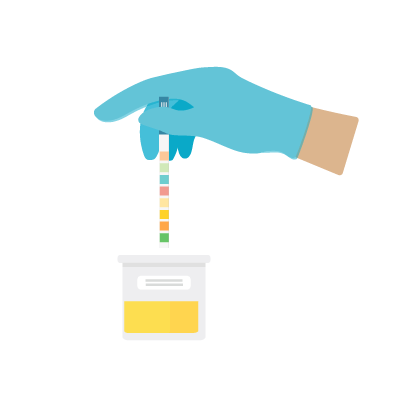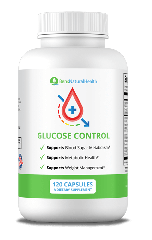- Q: What is foamy urine and what does it indicate?
- Q: What does foamy urine look like and does it differ from regular bubbles?
- Q: What does normal urine look like and how does it compare to foamy urine?
- Q: What is the difference between bubbles and foam in urine?
- Q: Is foamy urine normal, and when should I be concerned?
- Q: What other symptoms may occur with foamy urine?
- Q: What causes foamy urine?
- Q: When should I see a doctor for foamy urine?
- Q: How is foamy urine diagnosed?
- Q: What are the treatment options for foamy urine?
- What Informed Patients Want to Know About Foamy Urine
- Conclusion
- Our Medical Review Process
- Our Editorial Guidelines
- Medical Disclaimer
- Source
Are you wondering, “My urine is bubbly and foamy – should I be worried?” Many people feel anxious when their morning pee turns foamy. Releasing foamy pee is normal from time to time, as the speed of urination and other factors can affect the urine.
To provide authoritative medical perspective on foamy urine, we conducted an in-depth interview with a licensed medical doctor.
Dr. Ilija Kelepurovski answered direct questions regarding both typical and concerning causes, including foamy urine in men, and explained what patients should look for in terms of how foamy urine presents in different scenarios.
During the interview, we specifically discussed questions such as “what does foamy urine mean,” “why is my urine foamy,” and “what causes foamy urine.” Dr. Kelepurovski’s expert answers offer clarity on distinguishing between foamy vs bubbly urine and detail potential interventions, such as foamy urine treatment.
His insights also address key concerns including persistent foamy urine in the morning and whether factors like dehydration can cause foamy urine.
All information presented in this article has undergone thorough medical review and is supported by the most current, medically sourced information to ensure the highest content reliability for readers seeking answers.
Q: What is foamy urine and what does it indicate?
Dr. Kelepurovski answers: I’m glad you’re asking about foamy urine, since many people notice changes in their urine and wonder what they mean. If you’re seeing foamy pee in the toilet, sometimes it simply means your bladder is full and the urine stream is forcefully hitting the toilet water, creating bubbles and stirring up some foam. However, it’s very important to realize that persistent foamy urine can also be a sign of something more concerning, specifically, protein in the urine, which is medically termed “proteinuria.”
Under normal conditions, your kidneys act as filters that keep substances like protein, which your body needs, inside your bloodstream. When the kidneys aren’t working as they should, they may start to leak proteins, such as albumin, into the urine. Albumin has unique properties that can create a soap-like or foamy effect because it reduces the surface tension of the urine. Short-lived foam can still appear in perfectly healthy people after vigorous exercise, fever, temporary dehydration, or even a urinary-tract infection; in these cases it fades once you rehydrate, rest, or treat the infection.
See your doctor if the foam sticks around for more than a day or two, gets thicker, or comes with swelling of the ankles or eyelids, rising blood pressure, fatigue, or any change in urination volume. A simple urinalysis or an albumin-to-creatinine ratio test can confirm proteinuria; catching it early lets doctors slow or even halt many forms of kidney damage. Bottom line: Occasional bubbles are common and usually harmless, but persistent foamy urine is a red flag—have it checked so potential kidney disease can be found and treated early.
Q: What does foamy urine look like and does it differ from regular bubbles?
Dr. Kelepurovski answers: Foamy urine is typically identified by the presence of persistent, multi-layered small to medium-sized bubbles that don’t readily dissipate after urination. The foam usually forms a frothy layer on the surface of the toilet water, sometimes appearing slightly dingy or cloudy. This is different from the occasional large bubbles you might see after a fast or forceful urination, which often dissolve quickly and are usually nothing to worry about.
If foam persists after you flush, or appears consistently, it may signal the presence of protein in your urine, especially if accompanied by other symptoms. It’s also normal for foam density and the number of bubbles to vary among individuals. While urine hitting the bowl rapidly can whip up some foam, it’s the persistence and nature of these bubbles that can help distinguish between normal and potentially abnormal findings.For further reading on managing prostate health and urination changes, some individuals might explore dedicated supplements and their supporting information provided by healthcare providers, such as with the Prostate Healer supplement.

Q: What does normal urine look like and how does it compare to foamy urine?
Dr. Kelepurovski answers: Normal urine can vary in color based on hydration, diet, and overall health. If you’re well-hydrated and your kidneys and urinary tract are functioning correctly, your urine is likely to be pale yellow to a darker yellow, sometimes almost clear. However, completely clear urine can sometimes mean you’re overhydrated, drinking even more water than your body needs. The preferred urine color for healthy hydration is typically pale straw to yellow.
Foam is not a usual characteristic of urine. A few bubbles that disappear quickly are possible (not likely, but possible) to occur when:
- a very full bladder sends out a fast stream that “whips” air into the bowl, or
- The urine is temporarily concentrated as a result of mild dehydration.
This transient foam disappears once the stream slows or you re-hydrate and is generally harmless.
When you are dehydrated, your urine can become darker, ranging from dark yellow to amber, highlighting the importance of keeping up with fluid intake. If you notice your urine is honey or amber-colored, that’s often a sign to drink more water. For more detailed explanations about normal urine color and what different colors could mean, there are many resources that provide guidance.
Q: What is the difference between bubbles and foam in urine?
Dr. Kelepurovski answers: This is a common question, what’s the difference between simple bubbles and actual foam in urine? Urine with bubbles typically features larger, clear bubbles that appear after urination, usually caused by a strong stream, and flush away quickly. This is usually not a cause for concern. On the other hand, foam, especially persistent foam that remains after flushing, is finer and denser and may signal the presence of protein or other substances in the urine.Increased urine flow, dehydration, or even cleaning products (surfactants) in the toilet can cause some foam or bubbles, but consistent frothiness is what may need further evaluation. Consistently bubbly or foamy urine can sometimes indicate the early stages of kidney disease, especially if paired with other symptoms. To explore more about maintaining a healthy urinary system, individuals might benefit from reviewing available prostate health supplements such as Total Health Vegicaps and their relevant information.

Q: Is foamy urine normal, and when should I be concerned?
Dr. Kelepurovski answers:It is normal to have a couple of large bubbles that disappear right after you flush. These bubbles happen because a strong stream of urine or concentrated urine captures air for a moment.
It is concerning when the foam is thick, soapy froth and remains on the top of the toilet bowl for longer than a minute or two each time you pee. Persistent foam is usually due to leaked protein through damaged filters in the kidneys (protein in urine, or proteinuria) and can be an early sign of diabetic kidney disease, glomerulonephritis or some other type of chronic kidney damage. Consult your doctor right away if:
- foam is present most of the time you go to the bathroom for longer than a day or two,
- you are also experiencing swelling from the ankles or the face, higher blood pressure, fatigued feeling or decreased urine output, or your urine is pink, red or cola-brown.
A simple urinalysis and an albumin-to-creatinine ratio can confirm or rule out proteinuria so that your doctor can act to provide treatment, if indicated, before you suffer from any permanent loss of kidney function.
Research indicates that approximately 22% of patients who report persistent foam bubbles in their urine have clinically significant proteinuria, and over 30% have either overt proteinuria, microalbuminuria, or both, as highlighted in this medical review.
For pregnant women, foamy urine may warrant additional scrutiny. During pregnancy, the kidneys work overtime to process extra waste. If protein leaks into the urine, particularly after 20 weeks, it could signify preeclampsia, a serious condition marked by high blood pressure and organ damage. Before 20 weeks, proteinuria in pregnancy may reflect underlying kidney disease or unrelated issues, such as urinary tract infections or heart conditions. Anyone experiencing persistent foamy urine during pregnancy, or noticing new or worsening symptoms, should contact their healthcare provider for evaluation and appropriate treatment.
Q: What other symptoms may occur with foamy urine?
Dr. Kelepurovski answers: If you’re concerned about foamy urine, it’s wise to watch for other symptoms, as they can help point toward the underlying cause. Additional symptoms that might accompany foamy urine include:
- Cloudy urine
- Fatigue and increased tiredness
- Vomiting or nausea
- High blood pressure (the kidneys help regulate BP, so protein loss and declining function can drive it up).
- Loss of appetite
- Difficulty sleeping or restlessness
- Reduced urine output
- Darker-colored urine
- Dry orgasm
- Infertility concerns
- Swelling (edema) around the ankles, feet, face or eyelids — fluid leaks from blood vessels when large amounts of protein are lost in the urine.
- More frequent urination can appear when underlying diabetes or other kidney conditions coexist with proteinuria.
If you notice any combination of these symptoms with foamy urine, it’s especially important to reach out to a healthcare provider for appropriate evaluation, since they could signal kidney disease or another systemic health issue.
Get Your FREE PSA Lowering Diet Plan!
- Naturally lower PSA levels
- Reduce nighttime trips to the bathroom
- Enjoy better bladder control and urine flow
Q: What causes foamy urine?
Dr. Kelepurovski answers: Many people wonder, “Why is my urine foamy?”, and rightfully so, as several potential causes exist. Here are the most common causes of foamy urine, each with its unique explanation:
Fast urine stream
If you’re producing a strong, fast urine stream, especially after holding urine for a long time, the force can cause temporary foam or bubbles. Sometimes, a rapid flow is linked to weakened muscles around the urethra or underlying urinary incontinence.
Surfactants (cleaning agents in toilet water)
Certain organic compounds, called surfactants, can be found in toilet cleaning products and soaps. These substances trap air and lead to bubbling or foaming in water. So, sometimes cleaning products, not your body, are responsible for the foamy appearance after urination.
Diabetes
Foamy urine in people with diabetes is not uncommon. Diabetes can lead to excess glucose in the urine, making it cloudy and foamy. Sometimes, this signals the onset of diabetic kidney disease, known as diabetic nephropathy. As research indicates, symptoms like fatigue, leg swelling (pedal edema), and foamy urine with significant protein loss, over 3.5 grams per day, are classic signs of advanced kidney involvement. Resources for managing diabetes naturally are available for further education.

Dehydration
One of the most common causes of foamy urine is dehydration. When you’re not drinking enough fluids, your urine becomes more concentrated, often a darker yellow, with a stronger smell of proteins. Mild or moderate dehydration can both cause your urine to look foamy, making increased hydration a simple and often effective solution.
Kidney disease
Your kidneys work to filter waste while preventing valuable proteins from leaking into the urine. If the kidneys are damaged due to chronic kidney disease or acute injury, they may allow protein to pass through, resulting in consistently foamy urine. Persistent frothy urine, particularly when accompanied by other symptoms, can be an early warning sign of proteinuria and underlying kidney disease.
Retrograde ejaculation
In some men, retrograde ejaculation occurs during orgasm, causing semen to flow back into the bladder rather than out through the penis. When this semen mixes with urine, it may result in a frothy appearance. While less common, it’s a notable cause, especially in men experiencing related sexual or fertility issues. Vaginal discharge in women is not typically a cause of foamy urine.
Medication
Some medications, especially those used to treat urinary symptoms like pain, burning, or irritation (for example, phenazopyridine, known by brand names like Uristat, Pyridium, or AZO), can color or alter the composition of urine, occasionally resulting in foamy urine. For persistent changes after starting a new medication, check in with your healthcare professional.
Q: When should I see a doctor for foamy urine?
Dr. Kelepurovski answers: Occasional foamy bubbles that disappear immediately after you flush are not typically a cause for concern. Given that said, you should see a doctor if any one of the following is true:
- The foam is thick, and it’s present every time you urinate for more than 24–48 hours. Persistent frothy urine usually means protein is leaking past the kidney filters (proteinuria).
- You are also experiencing swelling of the ankles, eyelids or face, elevated blood pressure, weight gain, fatigue, or a decrease in urine volume. These feature prominently with disorders of the kidneys such as nephrotic syndrome or diabetic kidney disease.
- You have diabetes, longstanding high blood pressure or a family history of kidney problems. In these cases, proteinuria needs to be promptly assessed to reduce any further damage to the kidney.
- You are currently pregnant – particularly after 20 weeks of pregnancy – and have newly noticed some foamy urine or noticed it has worsened recently. Additionally, the presence of protein is new in your urine and you also have elevated blood pressure, which can be a sign of pregnancy-related kidney problems leading up to pre-eclampsia which can require immediate medical attention.
- Foam is appearing alongside other urine change warnings (such as pink, red, or cola-brown colour, fever, flank pain, or an odour, which may be pointing towards infection or bleeding).
Q: How is foamy urine diagnosed?
Dr. Kelepurovski answers: Foamy urine itself is not a specific disease, but a sign that deserves evaluation, especially if persistent. Diagnosis typically starts with a simple urine analysis. Your doctor will ask you to provide a urine sample which will be tested using a dipstick to check for elevated protein levels. If high protein levels are detected, further assessment may involve collecting your urine for 24 hours to determine if the protein leak is ongoing.In cases where there’s concern for chronic kidney disease or other significant health problems, doctors may also order a kidney ultrasound to look for structural problems or signs of damage. Monitoring for other symptoms and changes in urine output or color is also recommended. For more about laboratory diagnostics, see guides on urine color and testing.
Q: What are the treatment options for foamy urine?
Dr. Kelepurovski answers: Treatment for foamy urine centers on identifying and addressing the root cause. If dehydration is identified as the cause, increasing your water intake is usually the first and most effective step. For mild dehydration, a single glass of water may resolve the issue. For moderate dehydration, drink two to three glasses of water promptly.
If you’re dealing with chronic kidney disease, management will depend on the stage and the underlying disease. Controlling high blood pressure is a top priority, given its tight relationship with kidney health. Doctors may prescribe medications like angiotensin receptor blockers (ARBs), ACE inhibitors, or diuretics to lower blood pressure and decrease the amount of protein leaking into the urine. These medications work by relaxing the blood vessels, helping the kidneys maintain proper filtration and blood flow.
For those with diabetes, strict glucose control with the appropriate medications significantly reduces the risk of kidney damage and symptoms like foamy urine. In men with retrograde ejaculation, addressing the underlying condition or contributing factors can often help. For urinary incontinence, adjusting fluid intake and avoiding bladder irritants (like caffeine and alcohol) is helpful.
Regardless of cause, adopting healthier lifestyle habits can lessen the likelihood of proteinuria and foamy urine. Quit smoking, manage your stress, control salt and alcohol intake, eat more fruits and vegetables, stay active, and maintain a healthy weight. These modifications all contribute to improved kidney function and overall health.
Ultimately, treatment for foamy urine is individualized. If you notice persistent changes, I encourage you to work closely with your healthcare provider to arrive at an accurate diagnosis and effective plan for managing any underlying issue.
What Informed Patients Want to Know About Foamy Urine
Q: Can dehydration cause foamy urine, and how can I tell if this is the reason for the foam?
Dr. Kelepurovski answers: Yes. Dehydration is a common and harmless reason for temporary foamy urine.
When dehydrated, urine is darker and more concentrated; a fast stream hitting the bowl can then “whip” that thick urine into soap-like bubbles. If the foam occurs due to dehydration, the fix-and-check is straightforward:
Drink 1-2 large glasses of water.
Wait an hour and check again.
If urine is now pale-yellow and the foam has disappeared, then the foamy appearance was likely due to dehydration or a fast stream.
If the foam is still thick-looking or persists after an hour, get a urinalysis to rule out protein loss or other causes.
Q: Does foamy urine always mean there is protein in my urine?
Dr. Kelepurovski answers:No. The most frequent medical cause is protein, because as albumin acts like a soap trap and creates air bubbles. But if there is a strong flow, toilet bowl cleaners and dehydration can create foam too. Only a urine dip-stick urine or lab albumin to creatinine ratio can confirm protein is being lost.
Q: What does foamy urine look like compared to bubbly urine, and how can I visually tell the difference?
Dr. Kelepurovski answers: Bubbly vs foamy urine – a quick overview
Bubbly urine – a few large, clear bubbles that pop and vanish within a few seconds of urinating. Typically this is just due to a strong stream or the water in the toilet.
Foamy urine – a thick, white layer that appears similar to the head on beer and clings to the bowl for a minute or so. If foamy urine persists it can indicate elevated protein in the urine and should be checked if it continues.
Simple rule: if the bubbles disappear immediately, it is probably nothing to worry about; if they remain thick and creamy, you should schedule a urinalysis to rule out abnormal protein loss.
Q: Are there specific causes of foamy urine in men that women do not experience?
Dr. Kelepurovski answers:: Foamy urine is usually caused by the same thing for both men and women (dehydration or vigorous urination or protein leaking), but men also have two male-specific causes:
Left-over semen in the urethra just after sex can mix with the first urine and produce a soapy-looking foam for a brief moment.
Retrograde ejaculation which is when semen moves backward into the bladder instead of out of the penis (often seen after prostate surgery or certain medications) adds seminal proteins to the urine as it moves back into the bladder, causing a foamy appearance that usually clears up in the next few urine voids.
Both potential causes are harmless and will be resolved when the semen is washed out. If foam does exhibit longer than a day or two, the usual kidney-related testing is still applicable.
Q: Can certain foods or supplements cause foamy urine even if my kidneys are healthy?
Dr. Kelepurovski answers:Absolutely — some foods and supplements can occasionally cause healthy-kidney pee to foam, though the foam will only last for a few hours.
Extreme protein loads (e.g., whey shakes, very-high protein meals) will cause a small amount of extra protein to spill into the urine for a few hours, so a fresh post-gym pee can foam, even though your kidneys are perfectly fine.
Creatine, branched-chain amino acids and pre-workout powders can concentrate urine if you don’t drink enough water afterwards, whipping up a little foam.
Mega-doses of B-vitamins or vitamin C, salty snacks and caffeine/energy drinks are all dehydration risks, pulling water out, darkening and thickening urine so that it froths more.
Cleveland Clinic
Check-in tip: Drink a tall glass of water. If the next pee is pale yellow and not foamy, the foamy urine was likely diet or mild dehydration, not trouble with the kidneys.
If the foam persists for two days, or comes with swelling, high blood pressure or dark “cola” urine, then a lab test is indicated.
Q: Are there any home tests or checks I can do before visiting a doctor for foamy urine?
Dr. Kelepurovski answers: Before calling your physician, perform the following simple tests at home:
Drink 1-2 large glasses of water, and then pee again in 1 hour. • If the urine is pale-yellow and the foam dissipates, the issue is most likely related to dehydration, or less likely, a very forceful stream.
Over-the-counter urine strips are available at most pharmacies. A “negative” or “trace” reading is reassuring; a “+” means protein is present and you should schedule lab tests.
Note your next few bathroom visits. If after 48 hours you still have dense foam remaining after most voids notwithstanding adequate hydration—or you have swelling, high blood pressure or cola-colored urine—make a clinic appointment.
Conclusion
If you’ve noticed foamy urine, it’s natural to have questions or concerns. Most of the time, foamy urine is caused by things like dehydration, a fast or forceful urine stream, changes in diet, or other harmless reasons.
Sometimes, the foam can also be linked to eating certain foods or taking supplements. It’s important to remember that having foamy urine once in a while is usually not serious.
However, if it happens often, if you see other changes like swelling or if you’re worried, it’s a good idea to discuss it with your doctor. Foamy urine doesn’t always mean there’s a health problem, but your healthcare provider can help figure out if there’s anything that needs attention and offer reassurance or further guidance. Most importantly, you are not alone, and caring providers are here to help with any concerns about your health.
Our Medical Review Process
At Ben’s Natural Health, we are dedicated to delivering information that is clear, transparent, and rooted in scientific evidence. Our medical professionals author all content, which is systematically reviewed and updated every 12 to 24 months to guarantee accuracy and relevance based on the latest research. We exclusively reference peer-reviewed studies and articles from reputable medical journals. Every article includes complete citations and links, ensuring the information you read is well-supported and reliable. For further insight into our standards for research and medical review, please visit our medical review process.
Our Editorial Guidelines
For over 25 years, Ben’s Natural Health has led the way in evidence-based natural health information. Our strict editorial process guarantees the credibility of our content. Each article is produced by qualified medical professionals, including doctors, dietitians, nutrition experts, fitness coaches, or surgeons, and is subject to independent review. You can always find details of our contributors’ credentials and biographies linked at the beginning of every post. To better understand how we research, compose, and verify our articles, explore our full editorial guidelines.
Medical Disclaimer
The material presented on this blog is intended for informational use only and should not be considered a substitute for professional healthcare advice, evaluation, or treatment. Although our articles are created by licensed physicians and undergo medical review, they are not personalized medical counsel. You should always consult with your primary care provider or another qualified health professional for medical decisions. Never ignore or postpone seeking professional advice because of content found on this site. Any reliance you place on the information here is at your own discretion and risk.








